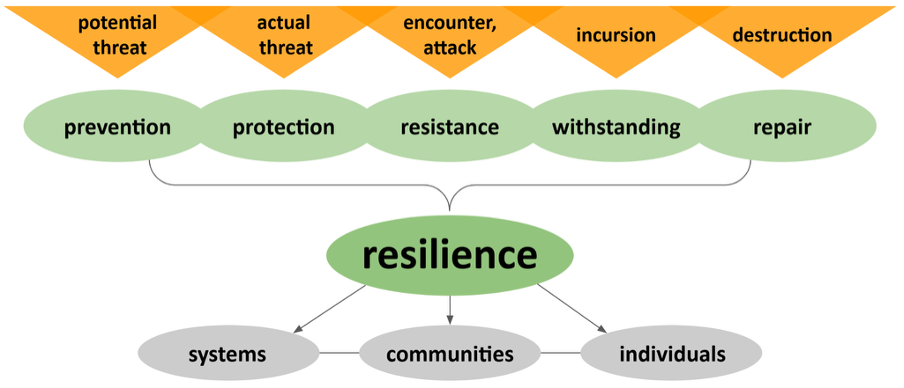As we witness the ever-evolving landscape of technology, we realize that artificial intelligence (AI) is not just a buzzword anymore; it's a reality that is already leading to transformation in how scholarly research is published and disseminated. Jeff Pooley's take on the legal dispute between The New York Times and OpenAI/Microsoft is emblematic of a broader trend where large language models (LLMs) are being trained on copyrighted content, raising concerns about fair use, potential biases, and the extractive agenda of commercial publishers in journalism and scholarly publishing. This brings our attention to unanimously take proactive measures, to challenge the publishers' practices and shape the ethical future of AI in these domains.
With AI algorithms increasingly contributing to the creation of scholarly content, we find ourselves to be at a critical juncture where authors and publishers are assessing just how much they can or cannot rely on AI. Consequently, the need for consistent and uniform guidelines regarding the use and disclosure of AI-generated scholarly research content has never been more apparent.
Let’s First Understand the Current Landscape of Guidelines and Regulations in Scholarly Research
As AI solutions are being implemented in the scholarly research arena, we find it disconcerting to note that concrete guidelines and regulations regarding its use remain scarce. While institutions and journals have established some rudimentary protocols, there exists no universally accepted framework to govern AI-generated research. This regulatory vacuum has led to ambiguity, inconsistency, and ethical dilemmas. Moreover, the lack of singular guidelines may lead to indecisive situations for authors as they consider whether particular publishing avenues may be closed for them due to the use AI in their research and manuscript writing.
Consider the situation where an AI-generated research paper is submitted for publication. How should this content be evaluated for authenticity and academic rigor? What disclosures should be made regarding the AI's involvement in the research process? Would all publishers be equally amenable to considering the paper, given there are typically two to three journals considered before the final publication? The lack of clear guidelines often leaves researchers, and perhaps to a lesser degree, journals too, grappling with these questions, jeopardizing the speediness and credibility of scholarly discourse.
While esteemed scientific journals like Nature and organizations like the Committee on Publication Ethics (COPE) emphasize the importance of carefully documenting the use of AI tools in research manuscripts, we realize that there is a pressing need to set consistent guidelines to disclose the utilization of AI at every stage of research. This ensures transparency, reproducibility, and standardized ethical compliance and evaluation in research. Transparency in methods, data sources, and limitations is not just an academic exercise; it's an ethical and scientific obligation. It safeguards research integrity, encourages reproducibility, and prevents unintended consequences in AI technology development and general research.
As we speak of the ways in which we can implement AI, it becomes all the more important to ensure these ethical considerations in AI-generated research
When an AI generates research content, it may not be immediately evident to readers that the work was produced by an algorithm. This opacity can undermine the trust that underpins scholarly discourse. Moreover, when generative AI solutions are involved, researchers may not be able to assess or validate the source or rationale behind any AI-generated content and map it to particular past research.
Furthermore, ethical concerns extend to issues of authorship, intellectual property, and bias. Should AI be credited as an author of a research paper? Who owns the rights to AI-generated content? And how do we mitigate the biases that AI algorithms may inadvertently introduce into research outputs?
This is when we realize that the need for consistency and uniformity of guidelines could be the ultimate solution to this concern.
The absence of consistent guidelines in AI-generated scholarly research content or a fragmented landscape of guidelines results in confusion and inefficiency. For researchers and publishers, it creates uncertainty about how to handle AI-generated content. Institutions and journals may develop their guidelines independently, leading to a lack of coherence across the scholarly ecosystem.
Consistency in guidelines is vital to establish a level playing field and ensure that AI-generated research is held to the same ethical and academic standards as human-generated research. Uniform regulations can provide clarity, streamline the peer review process, and foster a more equitable research environment.
Hence, here after hearing about the experiences of several researchers across the globe, and acknowledging notable incidents where researchers have been clueless about the ethical use of AI in research, we propose a framework for standard guidelines that will help us all establish a uniform protocol when using AI in research and writing.
Framework Elements
1- Codified Allowed and Disallowed AI Applications: Set clear guidelines on which research activities can be modified with AI workflows and solutions and establish limits on such integration.
2- Disclosure Requirements: Specify that researchers must disclose information about data sources, algorithms, parameters, and potential conflicts of interest to enhance transparency.
3- Authorship Attribution Guidelines: Establish clear guidelines for crediting individuals' contributions to research to ensure proper recognition and accountability.
4- Ethical Concern Mechanisms: Create mechanisms for addressing ethical concerns, such as the potential misuse of AI or harmful impacts on society.
5- Easy-to-Use Assessment: Create easily accessible checklists that guide researchers through the process of identifying permissible AI use as well as reporting requirements (similar to Equator checklists).
Although we set the guidelines following the above framework, there may arise some challenges of enforcement and compliance. How can we overcome those? Here’s how!
1- Enforcement Mechanisms: Develop mechanisms for enforcing compliance with the established guidelines, which may involve peer review, auditing, or reporting structures.
2- Actionable Steps: Provide concrete steps that institutions, researchers, and journals can take to implement and adhere to the guidelines effectively.
3- Invest in Identification Technology: Current technology for AI detection lags behind the advancements and incorporates biased output. Investment in developing sound AI detection solutions is required.
Regular Updates
1- Adaptability: Recognize that the field of AI is constantly evolving and ensure that the framework can adapt to new technologies, challenges, and ethical considerations.
2- Periodic Reviews: Establish a process for periodic reviews and updates to keep the guidelines relevant and effective.
3- Multi-party Reviews: Ensure to have a 360-degree approach to establishing guidelines by involving stakeholders from all impacted parties.
Education and Awareness
1- Training: Offer educational resources and training programs to help researchers, institutions, and journals understand and implement the guidelines.
2- Public Awareness: Promote public awareness of the importance of ethical research practices using AI technologies and the existence of these guidelines.
International Cooperation
1- Global Alignment: Encourage international cooperation and alignment of guidelines to ensure a consistent and global approach to ethical AI use in research.
2- Standardization: Collaborate with international organizations and standards bodies to develop common standards and best practices.
Incentives and Recognition
1- Incentivize Compliance: Provide incentives for researchers and institutions to adhere to the guidelines, such as recognition, funding opportunities, or publication preferences.
2- Recognition of Ethical Research: Highlight and celebrate research that exemplifies ethical principles and responsible practices of AI integration.
Accessibility and Inclusivity
1- Accessibility: Ensure that the guidelines are easily accessible and comprehensible for researchers and stakeholders from diverse backgrounds.
2- Inclusivity: Consider the needs and perspectives of underrepresented communities in when developing and implementing the ethical AI use framework.
Long-Term Impact Assessment
1- Monitoring and Evaluation: Establish a system for ongoing monitoring and evaluation of the impact of the guidelines and their societal implications.
2- Adaptation as Needed: Based on assessments, make necessary adjustments to the framework to address emerging challenges and ensure continued ethical progress in AI-implemented research.
These Consistent and uniform guidelines for AI-generated scholarly research content help safeguard the integrity of the academic community. Researchers can work with confidence, knowing that AI-generated content adheres to well-defined ethical standards. If you may wonder what advantage would these guidelines have, we have listed them for you here.
1- Enhanced Credibility: Uniform guidelines establish a baseline for ethical standards in AI-generated research, bolstering the credibility of research outputs and the academic community as a whole.
2- Quality Assurance: Researchers can trust that AI-generated content adheres to well-defined ethical and quality standards, reducing the risk of publishing flawed or biased research.
3- Confidence for Researchers: Researchers can work with confidence, knowing that their AI-generated content aligns with established ethical norms and principles, reducing ethical dilemmas and concerns.
4- Facilitated Collaboration: Uniform guidelines create a common framework for handling AI-generated content, making it easier for researchers and institutions to collaborate and exchange insights.
5- Streamlined Decision-making or Improved Transparency: Researchers and institutions from different countries can work together seamlessly, reducing confusion and misunderstandings related to AI-generated content.
6- Accountability: Researchers are held accountable for the ethical implications of their AI work, contributing to responsible AI development and usage.
7- Future-proofing Research: Guidelines can evolve to accommodate advancements in AI technology, ensuring that ethical standards remain relevant in a rapidly changing field.
8- Resource Efficiency: Researchers and institutions can allocate resources more efficiently when they follow a common set of guidelines, reducing duplication of efforts and wasted resources.
9- Compliance with Regulations: Consistent guidelines help researchers and institutions align with emerging AI-related regulations and legal requirements, reducing legal risks.
10- Public Trust: Demonstrating a commitment to ethical AI utilization in research conduction and knowledge dissemination through consistent guidelines helps maintain and build public trust in the research community.
In conclusion, as we navigate this transformation, it is imperative that we collectively address these challenges by developing and implementing a framework of guidelines that upholds the principles of transparency, accountability, and fairness. Through such guidelines, we can ensure that AI contributes positively to the advancement of knowledge while maintaining the ethical standards that underpin the integrity of scholarly research. The time has come for academia to unite in shaping the future of research ethics in the age of AI.
References
- Pooley, J. (2024). Large Language Publishing. https://doi.org/10.54900/zg929-e9595
Copyright © 2024 Uttkarsha Bhosale, Gayatri Phadke, Anupama Kapadia. Distributed under the terms of the Creative Commons Attribution 4.0 License.








